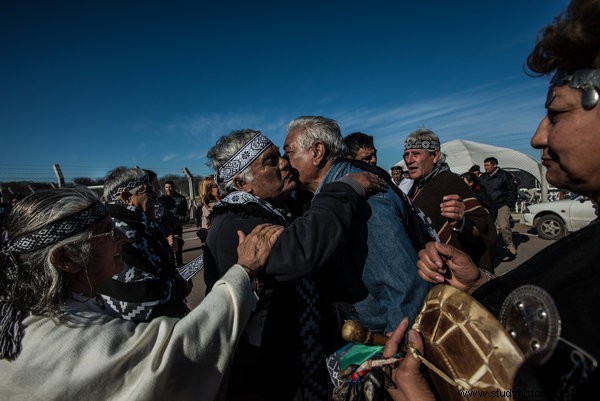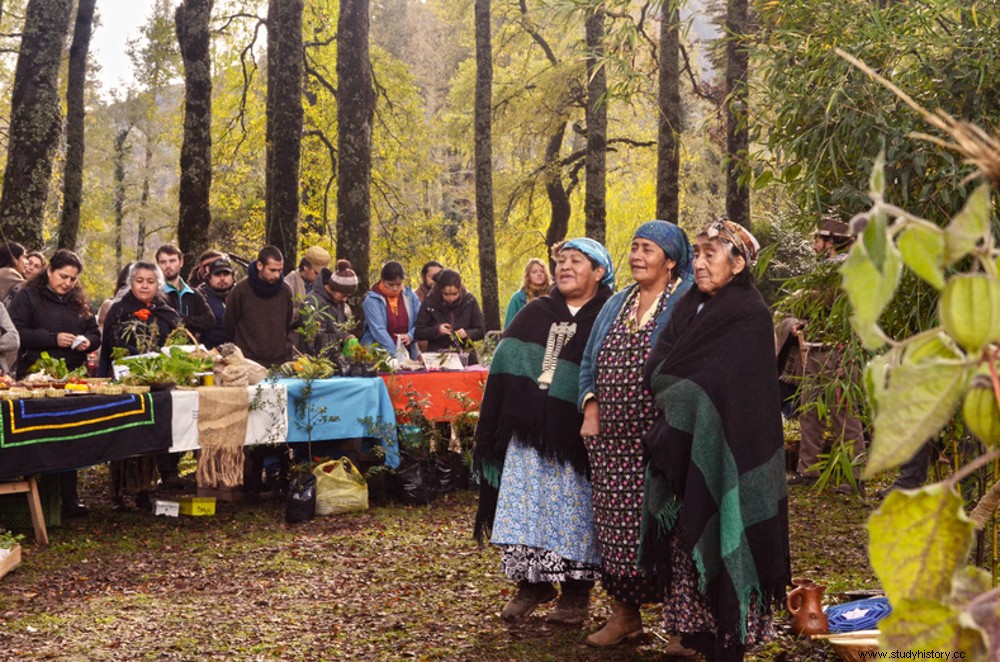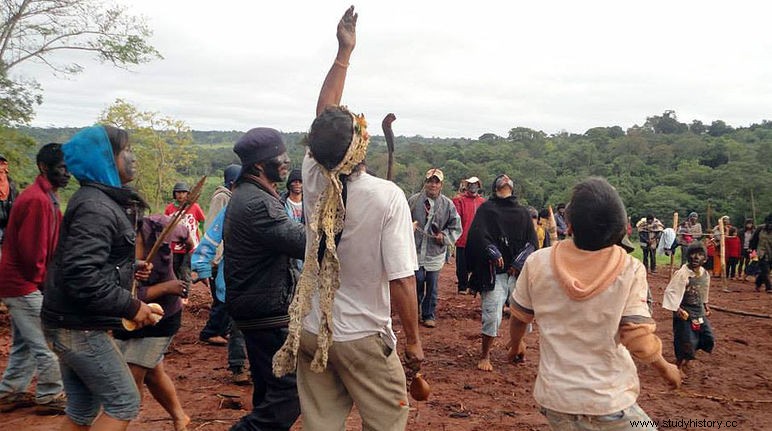Social challenges for Argentina's indigenous people
Every couple of hundred people in Argentina are made up of at least one indigenous people, whether they come from the forests of the Misiones, the lowlands of the Pampas or the deserts of Patagonia. Leaving aside cultural and geographical origins, however, these indigenous groups have long shared the same difficulties of losing land and dignity to oppressive settlers and governments.
Claiming the territory they have inhabited since time immemorial has done little to protect their traditional way of life and livelihood. Activism, anti-discrimination laws and advocacy groups have given Argentina's indigenous people greater rights and respect. But we must acknowledge the challenges they still face. In addition, we should appreciate, and perhaps even build on, the steps organizations have taken to lead these groups towards a more peaceful and promising future.
National Indigenous Demography
The indigenous population today represents between three and five percent of Argentina's population, but can make up as much as 25 percent of certain provincial populations. They consist of anywhere from 19 to 35 different groups, mainly living in the north and west of Argentina.
 And while they still mostly live in rural communities, the impoverishment of their countries has forced many to move to the country's cities. Data on urban indigenous peoples are limited. But it suggests greater density in provincial capitals such as Neuquén, as well as in the vast metropolis of Buenos Aires.
And while they still mostly live in rural communities, the impoverishment of their countries has forced many to move to the country's cities. Data on urban indigenous peoples are limited. But it suggests greater density in provincial capitals such as Neuquén, as well as in the vast metropolis of Buenos Aires. Doubtful numbers
A 2001 survey found that at least one person per Argentine household identified as a member or descendant of indigenous groups. But the country's indigenous people criticized the survey for excluding them. The Complementary Survey of the Indigenous Peoples later concluded in 2004 that over 383,000 XNUMX households had indigenous blood.
The largest groups represented include Mapuche (76,000 62,000 households), Toba (53,000 50,000 households), Kolla (36,000 400,000 households), Ava Guaraní (600,000 1.5 households) and Wichí (XNUMX XNUMX households). Between XNUMX XNUMX and XNUMX XNUMX Argentines identified themselves as indigenous peoples or descendants of the country's indigenous people. This accounted for about XNUMX percent of the country's population.
Of course, true populations can exceed these because many indigenous peoples continue to hide their identities for fear of discrimination. Assimilation into Western society has already meant the loss of indigenous status for some. And for many others, the struggle to acquire land and receive basic human rights only persists.
Native control set
In rural indigenous societies there is a chief (or Cacique , in Spanish) acts as the leading authority figure. They often receive analytical support from councils or commissions in matters of importance. The managers also integrate elements from neighborhood associations, health and development committees, churches, schools and other city bodies to perform various tasks.
Assemblies host decision-making assemblies for respective indigenous groups and elected members assign tasks to their local communities. In some cases, indigenous organizations based around international borders require transnational identity whose borders share their traditional territory.

Higher power
Communities also form higher-level bodies to address strategic issues. The Indigenous Communities of the Lhaka Honhat Association, a good example, represents 43 communities in northern Argentina. In addition, the Mapuche Federation of Neuquén consists of various lonko chiefs from all over the province. And the indigenous community Amaicha del Valle and Quilmes and the Kolla Tinkunaku community serve as collectives for grassroots movements.
The Guarani People's Assembly includes indigenous communities in Jujuy Province. The Pilagá Federation and Interwichí accommodate Toba and Wichí in the province of Formosa. And groups such as the Toba People's Council in Buenos Aires unite urbanized indigenous communities that have migrated from their traditional lands.
Other organizations have established themselves to provide communication, education and legal support to the indigenous people of Argentina and beyond. They include the Council for Aboriginal Events, the Commission of Indigenous Jurists of the Argentine Republic, the Community of Students of the First Nations of America, the Association of Indigenous Communities, and the Mapuche Communications Team of the Río Negro.
Need for larger device
Argentina has no confederation that includes all indigenous groups within its borders. This makes it more difficult to contact local community spokespersons. Nevertheless, indigenous bodies have held joint meetings to discuss cultural, political and economic interests since at least the 1990s.
These meetings originally brought about constitutional reform. But they have further revealed the historical degree of separation between indigenous peoples and the rest of Argentine society. They have also made clear the overlapping ambitions, interests and projects of indigenous peoples. This applies in particular to matters of basic requirements, governmental status and cultural identity and preservation.
Stronger together
Argentina's indigenous peoples claim that the country could have avoided many harmful acts and conflicts just by consulting them properly. And some have suggested the formation of an over-organization to unite their many bodies and societies.
So far, they have only come moderately close to forming a kind of parent organization. Examples include the Indigenous Association of the Argentine Republic, the Organization of Indigenous Nations and Peoples in Argentina, and the Commission of Indigenous Jurists of the Argentine Republic.
Today's challenges
The eighteenth and nineteenth century saw elaborate campaigns aimed at exterminating indigenous groups on potential agricultural land. The most notorious example, the conquest of the desert by President Julio Roca in 1879, led Argentina to incorporate the modern territory of the Pampas, Patagonia, and Tierra del Fuego. Unfortunately, the practice of driving indigenous peoples out of their country continues.

Environmental issues
Chaco Province hosts nine different indigenous groups that are largely dependent on a hunter-gatherer lifestyle. There, deforestation and cattle breeding have depleted the soil and destroyed local biodiversity. Entrepreneurs buy large tracts of land and level them to build farms. This destroys the reproductive cycles of the region's flora and fauna that the indigenous people survive to get food.
In the Pampas and Patagonia, landowners and traders are shamelessly shrinking the land to Mapuche, Tehuelche and Rankülche. Under cover of darkness, they move property fences. In addition, oil pollution in the Patagonian region pollutes water sources with hydrocarbons. This leads to higher levels of lead and mercury in the blood of indigenous peoples.
In the north, mining spills have also polluted Pilcomay, a river that flows along the border with Argentina, Bolivia and Paraguay. The presence of mercury and other heavy metals has now destroyed this most important fish source for local indigenous peoples.
Uninformed and not consulted
The UN Special Rapporteur on the Rights of Indigenous Peoples has criticized Argentina for its minimal consultation with indigenous communities on the development and exploitation of resources in their territory. Government projects often change the country to the point that they cause malnutrition and poverty for local groups. Even worse, the country can encourage investors and private companies to invade indigenous peoples' lands for economic gain.
Multinational corporations are also pressuring sheep farmers fighting in Patagonia to sell their ranchers and properties. This further complicates the process of indigenous peoples reclaiming the settlers who once took from them. Ultimately, they benefit minimally from increased employment in the agro-industries due to their unstable ties to the labor market.
Language barriers
Older generations of indigenous peoples tend to know their mother tongue as their only language. However, forced migration to an urban environment dominated by Spanish speakers often leads to younger generations losing the language completely. The Argentine government has openly encouraged bilingual and intercultural education. Nevertheless, there is still a lack of a proper system for carrying out such schooling.
Large indigenous groups
Before we discuss further the societal challenges and progress that Argentina's indigenous people have experienced, we should first appreciate the incredible diversity of human culture in this corner of the world. Here we learn briefly about some of the country's most populous, and thus most widespread and affected, indigenous groups.

Mapuche
Mapuche includes groups such as Picunche, Huilliche and Moluche, and lives in the southwestern provinces of Chubut, Neuquén and Río Negro. In total, they comprise more than 105,000 0.3 people in Argentina, and make up about XNUMX percent of the country's population.
The Mapuche culture is strongly farm-based and governed by lonko chiefs. After escaping from the Inca Empire centuries ago, Mapuche has functioned independently since as early as 600 BCE Their own calendar system places the start of the year on July 24.
Spiritually, they worship their Creator, Ngenechen , which embodies both their older and younger generations. They also believe in the world of Wenu (or Winche ) Map and maintain a cosmic balance through prayer and animal sacrifice. Shamans, usually women, play fundamental roles in the Mapuche faith.
Check (or Qulla)
With more than 70,000 XNUMX members living in Argentina today, Kolla is the country's second largest indigenous group. Kolla holds elected positions among herself and participates in various government activities.
Allied people, including Zenta and Gispira, defended their country against the Spaniards for more than a century after the first colonial contact in the 1540s. After Argentina's independence, they continued to work for minimal wages.
Most recently, they took back the property to Santiago Estate, which they lost control of in 1997. But a common ownership policy prevents them from being officially entitled to their land.
Toba (or Qom)
Toba are part of the Guaycuru people in the Gran Chaco region between Argentina, Bolivia, Paraguay and Brazil. More than 69,000 XNUMX Toba live around the provinces of Chaco, Santa Fe, Salta and Formosa.
Recently, however, more than 120,000 XNUMX Argentines have identified themselves as Toba. In this case, many of them live in more populous city centers such as Buenos Aires and Rosario.
Before the Argentine government claimed their forested region in the 1880s, Toba lived as nomadic hunters. At the turn of the century, however, they began to take up compulsory labor in cotton plantations.
Unfortunately, police and farmers murdered around 200 Toba during the Napalpí massacre in 1924. In addition, the flood of the Paraná River in 1982 destroyed Toba's crops and especially destroyed their communities. Today, they are still struggling to maintain both land and livelihoods.
The Tobaas have their own churches that merge their religious beliefs and practices with Protestantism. And their language represents part of the Guaicuruanian language group in the north of the country. Interestingly, while Qom refers to them as «simple people» Toba translated as "big forehead."
Ava Guaraní
Ava Guaraní, who is historically from Paraguay, is heavily based in the northern province of Misiones. The nearby Iguazu Falls regularly appear in legends and folklore.
Due to the large presence of Jesuit missionaries in colonial times, this group has also implemented Catholicism and other elements of European culture in its own practice. At present, the Ava Guaraní people number around 44,000 XNUMX Argentines.
Wichí
Better known as Mataco, this group consists of an Argentine population of between 36,000 50,000 and XNUMX XNUMX. Once nomadic, their society used to revolve around hunting. They live in the provinces of Chaco, Salta and Formosa today, but they struggle with land rights, deforestation and soy production.
Progress and activism
Argentina first officially recognized its indigenous peoples' groups in 1985 through its Act 23303. However, a definitive federal indigenous policy is still lacking. In addition, the twentieth century saw a constant change in the names, administrations, and jurisdictions of organizations tasked with addressing the affairs of indigenous peoples.
The first indigenous organizations were not to appear until the 1970s and only really made themselves heard in the 1980s. President Raúl Alfonsín passed a law in 1985 to provide and protect sufficient land for indigenous peoples. He was also involved in forming the National Institute of Indigenous Affairs and introducing bilingual education.

Constitutional reform
Amendments to the 1994 constitution recognized the "ethnic and cultural pre-existence of the Argentine indigenous peoples" and the validity of their land claims. Based on the president's work, the changes also guaranteed indigenous peoples' rights to bilingual and intercultural education.
The country continued to form its National Institute Against Discrimination, Xenophobia and Racism in 1995. And it later validated International Labor Organization Convention No. 169 in 2000 to recognize indigenous peoples' rights to self-government and self-determination.
Today, both the country's constitution and international human rights laws recognize indigenous peoples' right to their land. The Congress of the Argentine Nation also passed a law in 2006 to suspend expulsions of indigenous peoples while investigating and reversing the occupation of their lands.
Fight for rights
An increasing number of indigenous-led protests are aimed at ending the practice of discriminatory land intrusion. Perhaps most notably, indigenous organizations occupied the National Institute of Indigenous Affairs in 2002 to condemn the under-representation of their people. But vocal attempts by these groups to draw attention to the inequality they face have often failed miserably.
In October 2009, Diaguita member Javier Chocobar died defending the expulsion of his community in Tucumán province after a local landowner ordered him shot. And in 2010, Toba members blocked National Route 86 for four months to contest the development of a national university in their traditional country. The protest would abruptly end in injuries, deaths and arson following violent police intervention.
The Inter-American Commission on Human Rights intervened to warn Argentina against rashes and unnecessarily violent decisions. Argentina's Supreme Court also came to Toba's rescue in July 2013. It instructed the local government and the National Institute of Indigenous Affairs to draw up an action plan that returned stolen land and demanded the involvement of indigenous peoples in future use.
Furthermore, the Inter-American Commission on Human Rights issued measures to protect the Lule people of El Nogalito in the province of Tucumán. Members of the group were beaten and threatened in November 2012 by individuals who wanted to take their land. Less than a year later, the attackers set fire to their community building.
"The land is our life"
In any case, minimal rights for indigenous peoples to traditional territory have allowed the cunning to steal and violate their land. Félix Díaz, head of the Tobas Potae Napocna Navogoh community in Formosa province, told Amnesty International in 2013:
"We want to live as human beings. Not to be regarded as strangers in our own country, poor or useless. We want to live without discrimination. We do not want bloodshed, we just want to recycle our society.
"The country is our life. From it we get the food and medicine we need. It gives us the natural resources to make our houses, for our livelihood. Without the land, we indigenous peoples will lose our spiritual roots. ”
Promoting better treatment of indigenous peoples
Despite major strides toward reconciliation in recent decades, the damage Argentina has long inflicted on indigenous peoples remains etched in their lives and memory. Nevertheless, human rights commissions and indigenous peoples' bodies have certainly contributed to ensuring basic protection and freedoms for the people who have lived in this country for the longest time.

But achieving a society that truly respects the history, cultures, countries and rights of its indigenous peoples will take many more years of much-needed political and social change. And it has now become clear that these groups cannot bring about such a change on their own.
Rather, the Argentine government must encourage the nation as a whole and work closely with the indigenous people to give them back their land and livelihoods. Why should others care about this? Because a country that unites its people in harmony achieves far greater things than a country that hastily divides society over issues as sensitive as personal identity will ever do.
Referenced Materials
https://www.iwgia.org
https://www.worldatlas.com
https://theculturetrip.com
https://www.refworld.org
https://www.amnesty.org/
